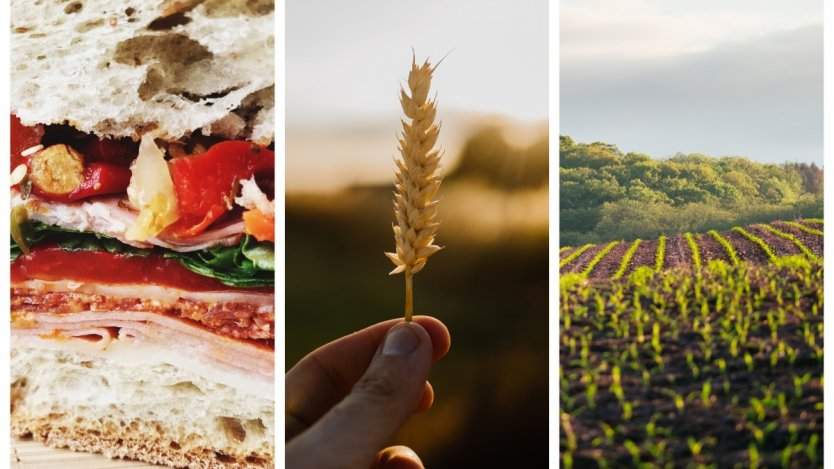Wheat a second, there seems to be a loaf of stories about wheat and bread this week. Dempster's is doing right by sandwich lovers across the country; the wheat code has been cracked, which is actually a pretty big deal; it takes a lot to feed the world, a lot of space that is; weed-killing chemical is found in popular breakfast foods; Ottawa's food truck scene needs a change of pace, and the Canadian National Exhibition unveils its wildest eats!
Here's what you may have missed in food news across Canada this week.
Dempster’s doughy donation
Apparently, Canadians love sandwiches--a lot. Seventy-seven per cent of Canadian parents plan to send their kids to school with a sandwich for lunch this fall, and a staggering 88 per cent say they are sandwich lovers themselves. But, not all Canadians can easily afford to eat them, as evidenced by the more than the 860,000 Canadians who use food banks every month according to Food Banks Canada. Dempster’s is doing something awesome to help. For every Dempster’s product purchased between August 23 and October 3, two slices of bread will be donated to Canadian food banks, up to 110,000 loaves of bread.
Get the full loaf of this story in this Restobiz article.
Weed-killing chemical found in popular breakfast foods

The study by the U.S.-based Environmental Working Group has found that a number of cereals, granola bars and oat-based products contain glyphosate, the herbicide sold to consumers under the name Roundup. According to EWG, farmers in the U.S. are spraying glyphosate on oats and other non-GMO crops because the herbicide dries the plants out and allows them to be harvested sooner. The amounts of glyphosate found in the products typically measured in the hundreds of parts per billion, or less than 0.000001 per cent. Children are considered particularly susceptible to carcinogens. More than two-thirds of the samples returned levels of glyphosate above what EWG considers safe for children.
Read more on this story in this CTV News article.
Wheat code cracked
The International Wheat Genome Sequencing Consortium (IWGSC) recently published, in the international journal Science, a detailed research article about the genome of bread wheat, the world’s most widely cultivated crop, which should lead to better global food security. This is big news because sequencing the bread wheat genome was long considered an impossible task, due to its enormous size—five times larger than the human genome. So, it’s not all yeast and flour. Wheat is the staple food of more than one-third of the global human population. To meet future demands of a projected world population of 9.6 billion by 2050, wheat productivity needs to increase by 1.6 per cent each year.
Read more on this story in this Food in Canada article.
Canadian National Exhibition unveils it’s wildest eats

The Canadian National Exhibition opened yesterday in Toronto, Ont. and the annual summer carnival has got some crazy eats! Chocolate-banana steak eclairs, pickle ice cream, fried frog legs and s’more fried chicken sandwiches are among the crazy gastronomic concoctions
Read more on this story in thisGlobal News story.
Take’s a lot to feed the world
It’s much larger than they thought it took to feed the world. If everyone in the world followed the USDA-recommended diet, there wouldn't be enough agricultural land to grow all the food, a new study has found. For the global population to adhere to the USDA dietary guidelines, an additional gigahectare of fertile land--roughly the size of Canada--is required, researchers say.
Get the full feast on this story in this CBC News article.
Ottawans hungry for more culinary creativity for street food vendors

The City of Ottawa's 2013 food truck program restricted both the number of vendors and where they could set up shop. The program established on-street spots for vendors to sell meals between 11 a.m. and 5:30 p.m. Each approved vendor has a designated permit for a specific spot that must be at least 46 metres from any other food provider, including restaurants. The vendors say they want to offer neighbourhoods more variety.
Get gassed up on this story in this CBC News article.













